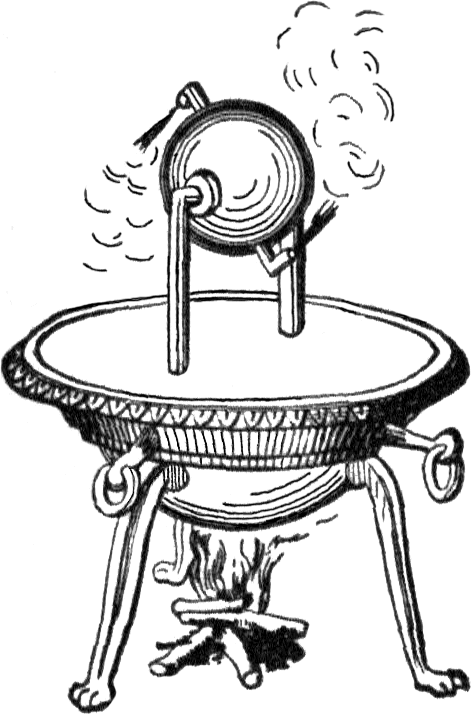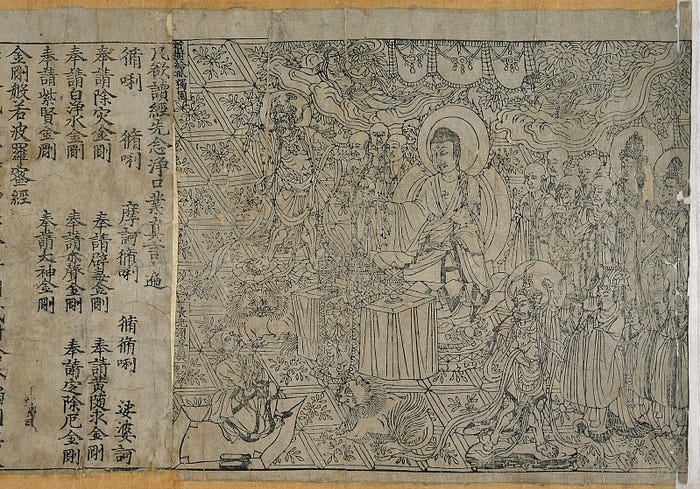What would you say are the most important inventions in world history? Once you start adding to the list, it's hard to stop. Medical inventions like vaccines and antibiotics have saved billions of lives. Vehicles — cars, airplanes, and trains — globalized the world and enabled humans to move freely around the planet. Mass communication inventions like radios, televisions, and the internet created our culture. Weapons, from the gun to the atomic bomb, transformed conflict.
When we talk about the history of innovation, we often focus on the inventors who developed new technologies, and, sure, the Thomas Edisons and Alexander Graham-Bells of the world are important. But creating a new technology is just one part of the equation. People also need to understand how to use an invention. For some innovations, these two insights happened simultaneously — the invention itself and how to use it. In other cases, they were separated by centuries.
So, let's look at two of the world's most significant technological might-have-been. Why were these crucial inventions — the steam engine and the printing press — invented hundreds or thousands of years before they transformed the world?
An ancient Roman steam engine
Who invented the steam engine, and when? You probably learned in school that this happened at the beginning of the Industrial Revolution in the 1700s, in the workshop of Thomas Newcomen or maybe James Watt. But the basic idea of the steam engine, in which burning fuel boils water, expelling steam that can be harnessed for energy, dates back to Roman times.
In first-century Alexandria, one of the great centers of learning in Hellenistic and Roman times was a prominent mechanikos ("machine man") named Heron. He was an insatiable scholar, perusing the scrolls housed in Alexandria's great library. He was a prolific inventor who developed a vending machine, an automatic door, and automata that acted out little plays.
All of these were pretty nifty, but the idea that had the potential to transform the world was the aeolipile, aka the "ball of Aeolus," the god of the winds. Water in a boiler would be heated; as it turned into steam, it would rise through pipes into a smaller ball above the boiler. Once pressure grew high enough, the steam would escape through nozzles attached to the ball, causing the ball to rotate.

Heron had discovered the basic principles of the steam engine — burning fuels created motion that could be captured as energy — over 1500 years before that invention transformed the world. Here was a device that had the potential to deliver a revolution in the way that people lived. So why didn't the Roman Empire undergo something like an Industrial Revolution?
There are two reasons. First, and perhaps most importantly, the Romans and Greeks had not developed the other technologies required to turn the aeolipile into a 1700s-style steam engine. They weren't burning coal for energy and hadn't produced metals that could be used in a high-pressure boiler. As a result, the aeolipile couldn't generate all that much power. But it's possible that had they understood the potential of this machine, they would have pursued some of these avenues.
This brings us to the other reason the Romans didn't develop a useful steam engine: a failure of imagination. The aeolipile could have been the first step on the road to handy steam engines (after all, a lot of the early steam engines in England were pretty useless), but nobody saw the potential.
Why not? First, Romans had plentiful sources of cheap energy — slaves — so they didn't feel the need to pursue technological solutions.
Second, Heron and his contemporaries didn't see his invention as anything other than a curiosity. Imagine if the Furby had contained an immensely valuable engineering principle that would eventually change the world, but nobody realized that it was anything more than a toy.
All of Heron's gadgets were essentially gimmicks to be used in places like temples, machines that would awe visitors by demonstrating the power of the gods. The aeolipile was similarly used as a novelty. Nobody seemed to understand that it showed a principle that would someday transform the world, so humanity had to wait over a thousand years to unlock the energy revolution.
The first printing press
You probably also learned in high school that Gutenberg's invention of the printing press in the 1440s was another pivotal point in world history.
The printing press made books much cheaper and more accessible in Europe. Literacy rates skyrocketed, and the spread of knowledge created an intellectual ferment. First, printed materials enabled the Protestant Reformation to challenge the orthodoxy of the Catholic Church; then, they made the Scientific Revolution possible. The invention of the printing press was a crucial factor in modern Europe's rise to prominence and power.
But Johannes Gutenberg wasn't the first to invent the printing press. Chinese inventors beat him to it by centuries.
The earliest printed book that we can confidently date, a Buddhist text called the Diamond Sutra, was produced in the 800s CE. It was made using woodblock printing, which requires printers to carve an entire page's worth of images and text into a wood block and press it onto paper. This was useful but still pretty time-consuming, considering that a unique wood carving would have to be made for each book page.

The real breakthrough was movable-type printing, which allowed printers to quickly arrange pre-made blocks, each representing a letter, for each page. A Chinese inventor named Bi Sheng devised this system around 1040. So why isn't Bi Sheng's name as well known as Gutenberg's? And why didn't his invention transform China as it did Europe?
The biggest reason is the nature of the Chinese language. While European languages use an alphabetic system comprising a few dozen symbols, Chinese use logograms, meaning that there are thousands of characters. So, in China, printers would have to have copies of thousands of characters on hand, while in Renaissance Europe, printers only needed copies of a few dozen letters and numbers.
This meant that movable-type printing was far more convenient and inexpensive for Europeans than Chinese people. In China, printed books weren't much cheaper than other types of books, which meant that the technology didn't revolutionize everything the way it did in Europe.
The spread of printing technology may also have been limited by political factors. In China and Korea (which also adopted movable type before Gutenberg), printing was primarily done by and for the government, which controlled the spread of literature. These governments were not particularly interested in the free spread of knowledge. The Korean government, for example, only allowed printing to be used to reproduce Confucian literature.
Social pressures also limited the spread of printing. When the Korean ruler Sejong developed hangul, an alphabetic system that simplified writing, the nobility (most of the country's literate people) stuck with the old logographic hanja system. They weren't interested in making reading and writing easier; their hard-earned literacy made them elite.
These aren't the only technological might-have-beens. Chinese inventors developed gunpowder in the ninth century but mostly used it for fireworks and ineffective weaponry. It would be hundreds of years before cannons and guns would dominate warfare. Bell Labs in the United States invented the transistor in the 1940s but seemed not to understand that this little electrical device would transform the world. It would take some time before others built on the transistor to make smaller electronics and eventually the microchip.
It's fun to imagine a world in which Roman inventors created an industrial revolution a thousand years ahead of schedule or in which East Asian printing caught on hundreds of years before the Europeans figured it out. But there were also good reasons why these technologies didn't take off, and the forces that worked against these breakthroughs were powerful.
We often think of new technologies as inevitable. Our stories about them often go like this: a genius inventor comes up with an idea, and people immediately recognize its usefulness. The world is transformed. But in reality, there are often powerful social, governmental, or logistical obstacles standing in the way of these technologies.
It does make me wonder, though: is there a Heron of Alexandria or a Bi Sheng somewhere in the world who's developed something that will change the course of history but doesn't understand what they have on their hands?
Thanks for reading! If you'd like to receive an email whenever I publish an article, click here. I also write Looking Through the Past, a newsletter about historical artifacts and images — check it out! You can "buy me a cup of coffee" here.
References:
- Diamond, Jared. "Invention Is the Mother of Necessity." The New York Times, 1999. archive.nytimes.com/www.nytimes.com/library/magazine/millennium/m1/diamond.html.
- Hoh, Anchi. "The History of Printing in Asia According to Library of Congress Asian Collections — Part 1 | 4 Corners of the World." The Library of Congress, 22 June 2021, blogs.loc.gov/international-collections/2021/06/the-history-of-printing-in-asia-according-to-library-of-congress-asian-collections-part-1.
- Nugent, Addison. "Why Heron's Aeolipile Is One of History's Greatest Forgotten Machines." Popular Mechanics, 3 Nov. 2021, www.popularmechanics.com/science/energy/a34554479/heron-aeolipile.
- Working Model of Hero's Aeolipile | Science Museum Group Collection. collection.sciencemuseumgroup.org.uk/objects/co50879/working-model-of-heros-aeolipile-steam-turbines.

